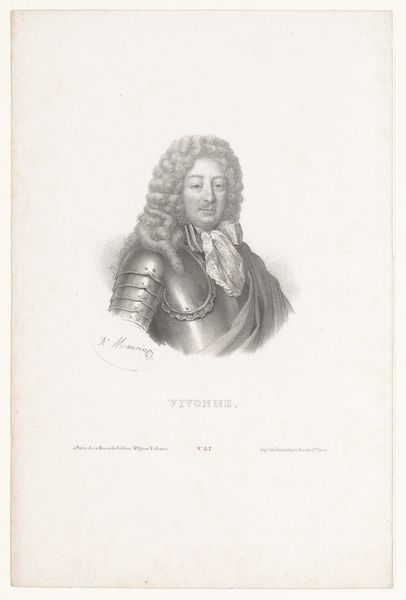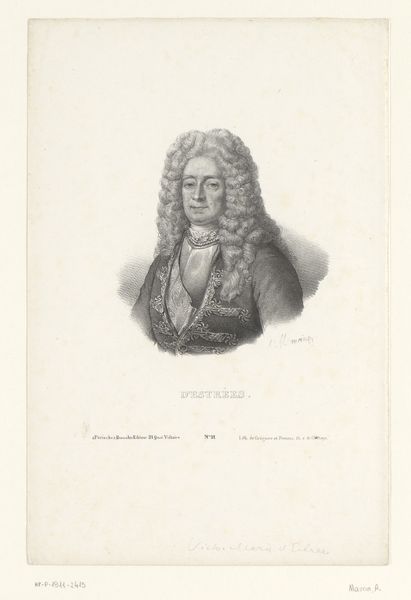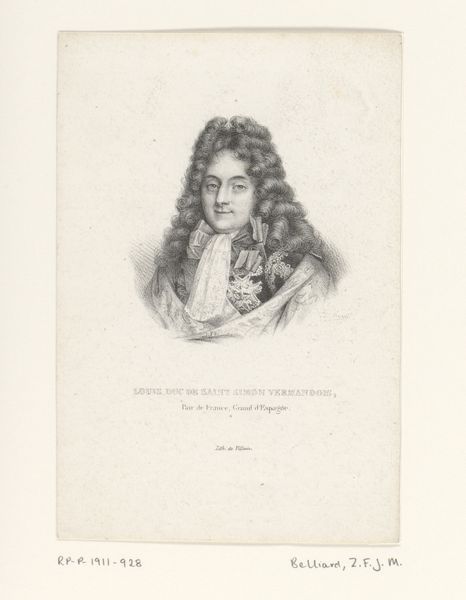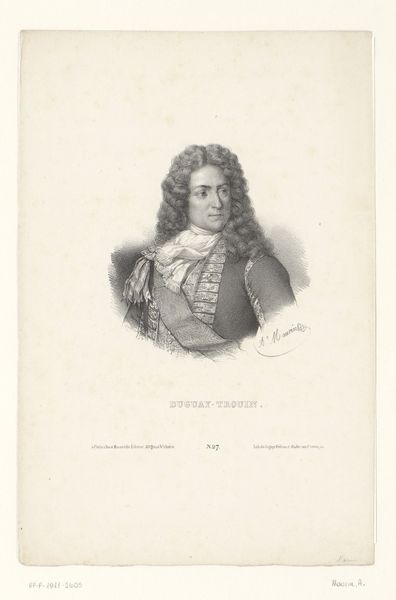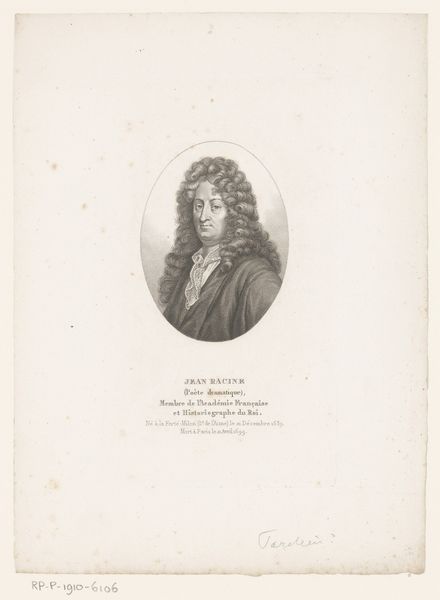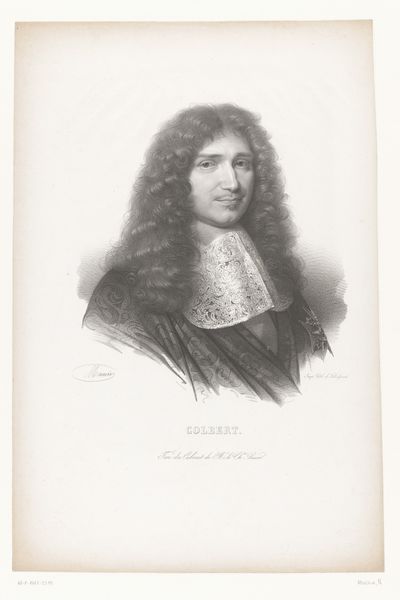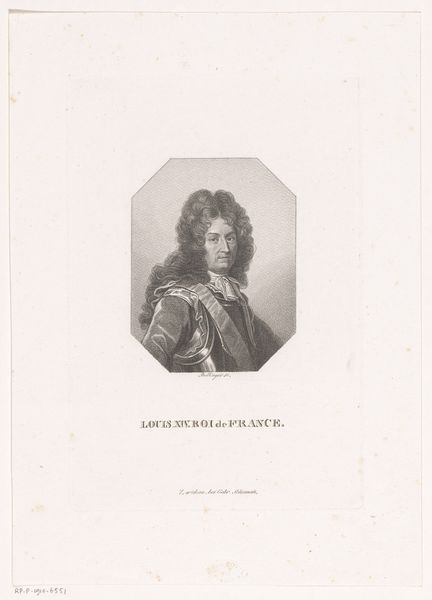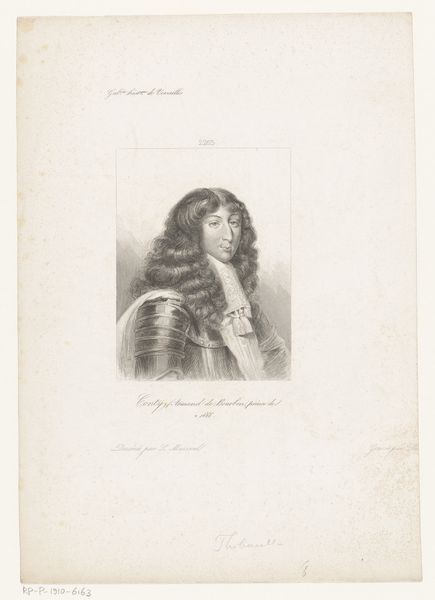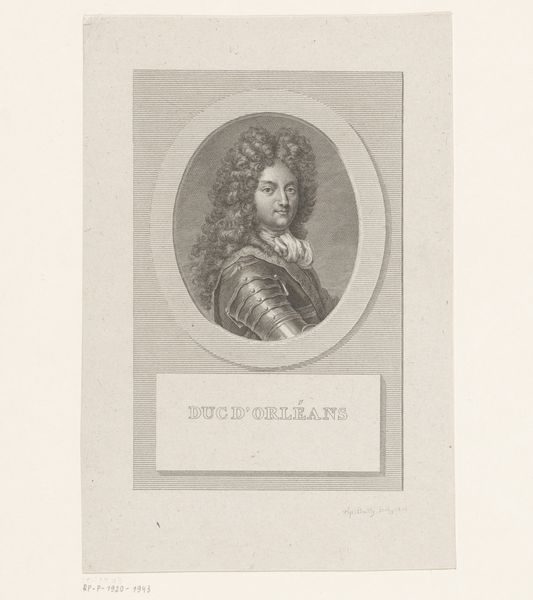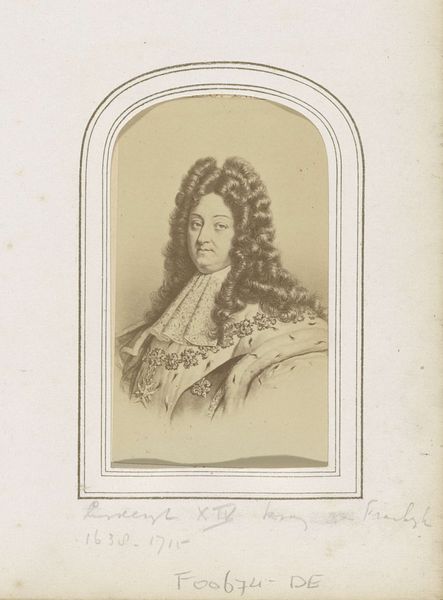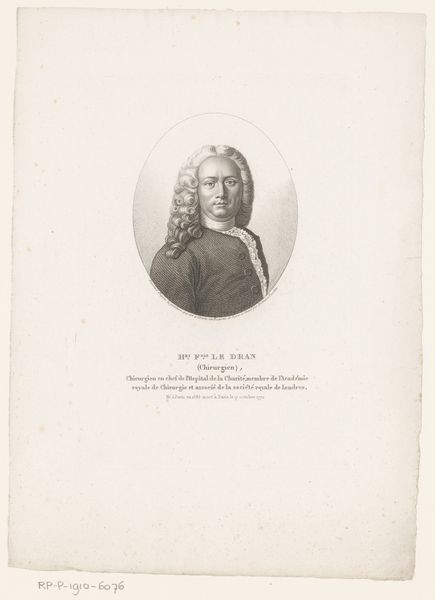
Portret van Lodewijk Alexander de Bourbon, graaf van Toulouse 1835 - 1851
0:00
0:00
Dimensions: height 277 mm, width 172 mm
Copyright: Rijks Museum: Open Domain
Editor: So, this is Antoine Maurin’s "Portret van Lodewijk Alexander de Bourbon, graaf van Toulouse," dating from 1835 to 1851. It's a pencil drawing and engraving. It’s interesting how he’s portrayed in armor but the lines are so delicate. What draws your eye when you look at this work? Curator: The figure is framed and ennobled with period regalia, referencing status. The armour hints at the Count's martial prowess. What intrigues me most is the powdered wig—an incredibly potent symbol within this cultural moment, a performative presentation of identity in contrast to natural, flowing hair. Why do you think Maurin emphasized it so? Editor: I hadn’t thought of the wig as being so significant. I was mainly focusing on the textures, but thinking about it as a signifier changes everything. Maybe it's a marker of belonging to a certain class, a kind of uniform? Curator: Precisely. The wig as uniform. Consider too that Louis Alexandre de Bourbon was the illegitimate son of Louis XIV, legitimized but always marked by that history. The wig then also becomes a means to mask, to project authority in spite of his lineage. And the artist's choice of delicate lines is very telling! Don't you think it makes a contrast with his military purpose, like something in between force and power? Editor: That's a fascinating interpretation. I was so focused on the aesthetics that I missed the symbolic layers completely. Thank you, I learned a lot from your interpretation! Curator: It's through the interweaving of history and symbol that art truly speaks to us across time, inviting contemplation, no?
Comments
No comments
Be the first to comment and join the conversation on the ultimate creative platform.
